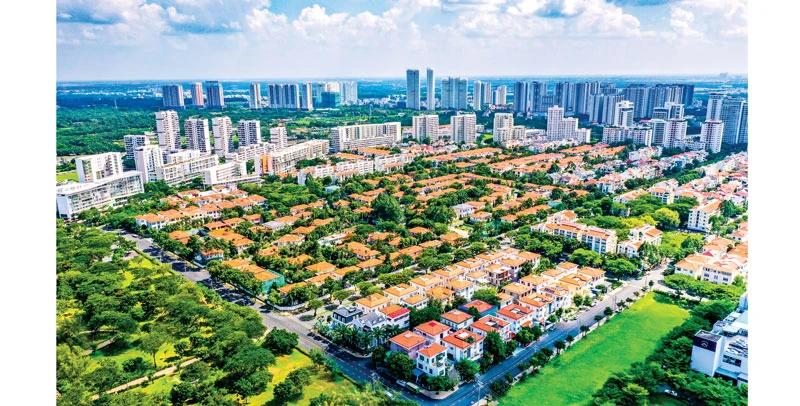
Attractive high paying jobs and technological spillovers motivate the public sector to build up financial centers, but there is too often little thought to what are the natural advantages that drive demand for financial services and then how to expand that advantage into an international market.
Identify the advantages
The Ho Chi Minh City drive to build out an international financial center faces many of the same specific challenges. What are the natural advantages of HCMC and what demand for financial services exist domestically that could promote the internationalization of the local financial market? Furthermore, in a highly restricted financial market such as Vietnam needing significantly higher level of highly skilled talent, what does HCMC and Vietnam need to do to transform itself into an international financial hub?
To better study this question, we will use the Shenzhen-Hong Kong Greater Bay Area in southern China and their experience as an international financial center. Hong Kong is a global financial center with trading in all major currencies and a wide variety of products with capital allocated around the world.
Shenzhen, just across the border in Mainland China, has fostered a rapidly growing financial center largely targeting domestic investors and firms. Given the different focus of the each financial center, what factors have prompted the different focus of firms and what can HCMC learn from the experience of the Greater Bay Area financial market?
Hong Kong is an international financial center because it is a small open economy. The disadvantage of the small open economy forces service providers to look well beyond the monopoly advantage of the home market forcing competitors to think about what they can offer that others do not. Additionally, Hong Kong has a strong and respected legal system and judiciary that does not play political favorites in cases of commercial litigation. Many investments from throughout Asia specify Hong Kong as the jurisdiction of dispute resolution. Attracting high quality service providers to service clients and make investment. This helped create a feedback loop which drew in money to be invested throughout Asia and the rest of the world.
Conversely, Shenzhen relies primarily on its position as a tier one city in China and the base of manufacturing for all of China to attract financial talent and services. Venture capital investment is focused on the start up scene Shenzhen and the tech environment specializing in hardware and advanced software. Notably, while a small number of major VC international investors have moved into Shenzhen, they remain relatively marginalized in major deals and do not play a major role in total funding.
Turning HCMC into an IFC
Taking the existing framework that we see in the divide between Shenzhen and Hong Kong in their financial services sector, gives us a clear framework to compare to HCMC.
First, HCMC shares some similarities with Shenzhen in that it operates in a tightly controlled foreign exchange market focused significantly on domestic banking. This does not mean that HCMC is locked into a specific development path, but it does inform the current state of the market and guide how we need to approach an internationalization strategy. If HCMC is going to build an international financial center, it needs to chart a path that allows for greater cross border flows both into Vietnam for domestic investment and then back out for investment into other countries. It is effectively impossible to have an international financial center without the ability to move currency across borders.
Second, building an international financial center means nurturing clients and investments from around the greater MeKong Region, South East Asia, and the world. Currently, while there is outward investment flows into certain manufacturing types, Vietnam lacks the broader financial asset base and outward linkages to foster a major financial center much less international financial center. Whether it is infrastructure investments requiring long term contracts and currency stability or technology start ups needing large amounts of skilled labor, the broader supply of assets that would attract international investors into the domestic market place remains lacking. Building an international financial center that can take specific expertise into the region becomes a much more probable outcome if the financial expertise exists domestically that can then invest elsewhere. Vietnam needs to focus on improving the domestic supply of assets to build linkages with international investors that it can leverage into further opportunities.
Third, Vietnam needs to alter the financial sector and investment legislation and regulation to increase HCMC attractiveness as a financial center. While Vietnam has opened the investment market so that foreign investors can own more assets, there are still impediments to the broader investment climate market. Contract reliability, banking and investment sector legislation, and currency flows are just some of the hinderances to realizing the broader objective of the HCMC international financial center.
There are multiple models to realize the fundamental objective depending on the broader political sensitivities. For instance, it is possible that a HCMC international financial center may be set up as a type of special economic zone with distinct legislation and regulation. This may address issues surrounding capital flows and legal system, but it would compartmentalize many of the benefits that accrue from an international financial center. A broader change to facilitate HCMC international financial center objectives may require broader political appetite to allow larger capital flows and financial sector law that reassure international investors. This is a political question that remains unanswered currently.
Ho Chi Minh City faces a unique set of circumstances and challenges in reaching its goal to become an international financial center. To realize its objective, it must thoughtfully consider what are its natural advantages and challenges to realize that. With a rapidly growing economy and expanding manufacturing and technology sector, opportunities exist that would attract international investors seeking increased access to the greater MeKong Region. Strict capital controls, weak legal system, and need for greater domestic asset base are all challenges but also present reasonable solutions.




















